This was published 8 years ago
Kolkata, India: Why India's dirtiest city is unexpectedly surprising
By John Golder
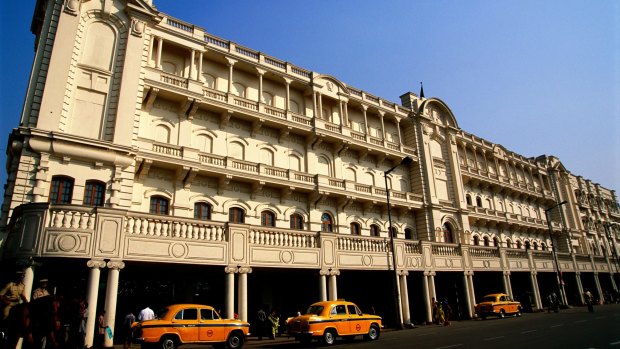
Old buildings have a faded glory.Credit: Alamy
Anoop was making tea when I asked him about Kolkata. Squeezing the bag against the side of the mug, he considered it for a second. "It is …" he paused while he strangled out the last useful dribble, "the poorest, dirtiest city in India."
This was not what I wanted to hear. Anoop hails from Chennai, hardly top of any liveability indexes itself, so his verdict seemed especially damning. This was ahead of my first visit to India, a country I had purposely avoided in the past, partly because I feared I'd spend half the time haggling and the rest fending off some dysentery or other.
Even now, I'm a bit fuzzy on why I chose Old Calcutta – and only there – as my first Indian destination. Almost everything associated with it seems to have a negative connotation: The Black Hole of Calcutta, Mother Teresa's squalid orphanages, Rudyard Kipling dubbing it, "The City of the Dreadful Night".
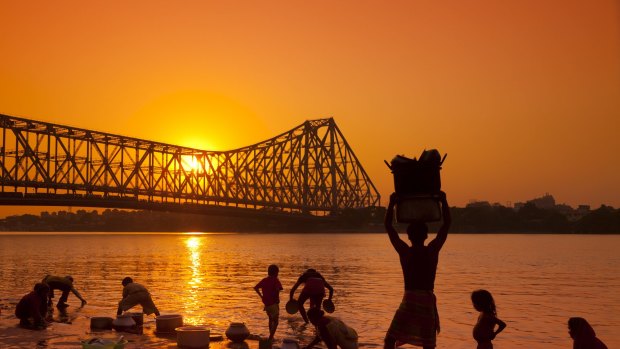
Sunset over the Hooghly River.Credit: Getty Images
With all this and much more in mind as I set off, my expectations were half an inch lower than a slug's belly. And yet …
And yet perhaps that's the best place for expectation, because with just a few recommendations to follow around the city, over the course of three manic, occasionally disgusting, often fraught days, I fall quite in love with Kolkata.
The first morning sets the tone for those which follow, and as I'll realise, almost everything that's right and wrong with the city can be found at the Marble Palace, which appears in all its fading glory as suddenly as a rat from a drain in the middle of Muktaram Babu Street.
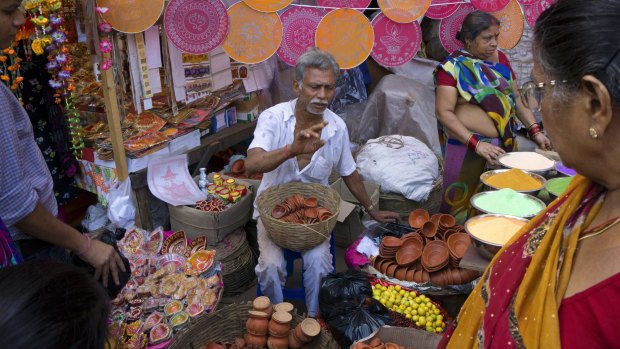
A market in Kolkata.Credit: Getty Images
As I approach this building, which looks a bit like a battered White House, I notice that a man with a spear guards the entrance. He tells me that it's free to get in, but that I can't take photographs anywhere on the grounds and that I must have a (free) guide accompany me. But this is India, people say a great many things, and baksheesh is expected everywhere.
To my surprise, the small bribes to both the spearman and guide still don't give me the chance to take photos. Nonetheless it's a strange treat – the gardens are reasonably well kept and the main house is wonderfully odd.
The collection of art inside is one of the most extraordinary and inconsistent I have seen anywhere in the world. Allegedly there are works by Rubens here, but there's plenty of woeful taxidermy too, and some paintings are so shoddy that I suspect they may be the work of the corrupt guides. There's also a particularly spectacular, floor-to-ceiling carving of Queen Victoria, which seems entirely at home here – her mania and that of her subjects created this whole mess, after all.
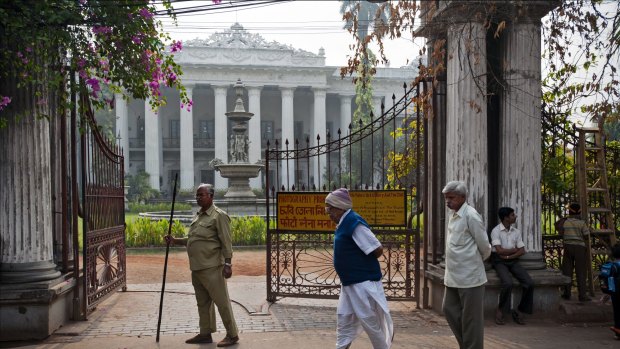
The palatial 19th-century Marble Palace mansion in North Kolkata.Credit: Getty Images
From the Marble Palace I walk to the Coffee House, where I'm told I'll be able to have a great many fascinating conversations with people who speak perfect English. Despite its fetid reputation, Kolkata is a tremendously bookish city, home to over 100 colleges and universities and boasting a higher proportion of English speakers than the national average. This all sounds wonderful and I look forward to some nerdy, literary conversation, as well as a decent cup of coffee.
Finding the place is less simple.
As I stroll around the streets in what Google Maps tells me is the correct neighbourhood, three tiny children appear from out of nowhere, arms outstretched, squealing "Money! Money! Money!" I like to think of myself as an adept avoider of this kind of situation, but these waifs have a tactic I've never encountered before – clamping onto my legs, limpet-like when I attempt to stride past them. They're so scrawny that with one on each leg, I can still make steady progress, like a man walking through a swamp, but when the third jumps on, I'm almost taken down.
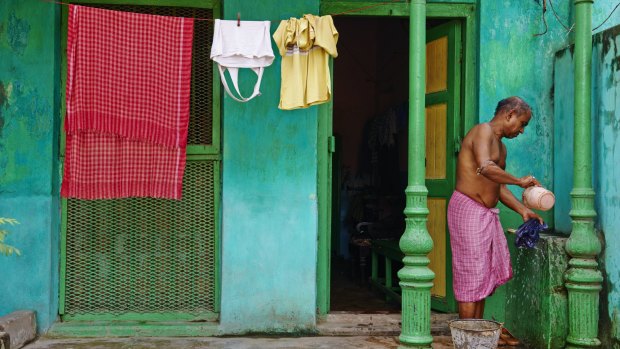
A resident of Kolkata.Credit: Getty Images
At this point my options seem limited – I'm 1.82m (six foot) tall and blonde; I look very foreign. Violence towards three pre-schoolers would almost certainly be uncool. Shamefully (and I mean thankfully) a local builder sees the chaos unfolding and decides, very chivalrously, to chase the children off, threatening them in a language they can understand (specifically: shouting and waving a big stick around).
I hail the first available cab and get the hell out of there, following my next recommendation to go to the banks of the Hooghly River, where a religious procession is taking place. The colours of garments and the faces of the faithful make for spectacular photos, but it's hard to pay too much attention to them when the river police are hauling a dead body out of the water just a few metres away. The pious folk around have almost no interest in it at all – the majority keep on bathing as it's brought ashore – but I can think of nothing else. However, before I get a chance to dwell on it too much, Maggie tells me I shouldn't worry about it.
Maggie is very finely dressed in an airy pink sari, which catches the breeze from the Hooghly. She allows it to gust up and around her face, occasionally hiding her grin, and she giggles all the while. Maggie is a big flirt.
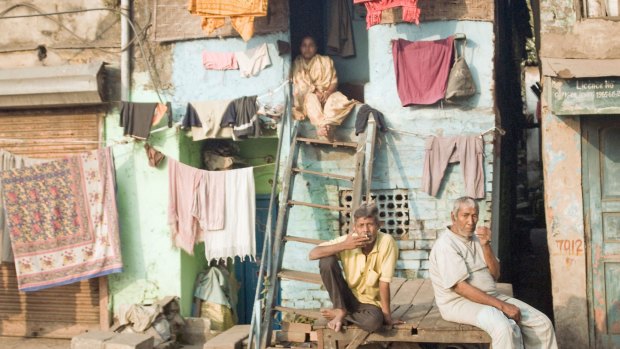
The streets of Kolkata.Credit: Alamy
Maggie is also not all woman. And the closer I look, the more I realise that the reason she is trying to hide her jawline is because she forgot to shave this morning.
"Are you married?" asks Maggie.
"Yeah, yep, uh-huh," I reply, one eye on the rotten river corpse, the other on my new friend.
"Your wife, she's with you?"
"She's, uh, at the hotel." This is a lie; she hasn't travelled with me.
"I think you need another wife," giggles Maggie.
For me, the only real reason to travel is to later tell stories, whether through pictures or words or conversation. I got more from a single day in India than I have done in weeks in other places. The more you travel, the more you have a chance of doubling up on experience – genuinely unique moments are extremely rare. But I doubt I'll ever visit another place and have a transgender local propose to me over a putrefying cadaver – for that, I'll always have Kolkata.
TRIP NOTES
GETTING THERE
Despite its size and history, there are no direct flights between Australia and Kolkata. There are dozens of alternate routes to get there, either connecting through Singapore with Singapore Airlines (www.singaporeair.com) or Kuala Lumpur with Air Asia (airasia.com). Alternatively, if you're not in a hurry, you can overshoot India and travel with one of the Gulf carriers.
STAYING THERE
It's a cliche to call a city hotel an oasis of calm, but in the case of the Oberoi Grand, it's no exaggeration. The city is near bedlam outside, but all is serene inside its gates. Doubles start from $177 (www.oberoihotels.com).
The writer was a guest of the Oberoi Grand.
Sign up for the Traveller Deals newsletter
Get exclusive travel deals delivered straight to your inbox. Sign up now.